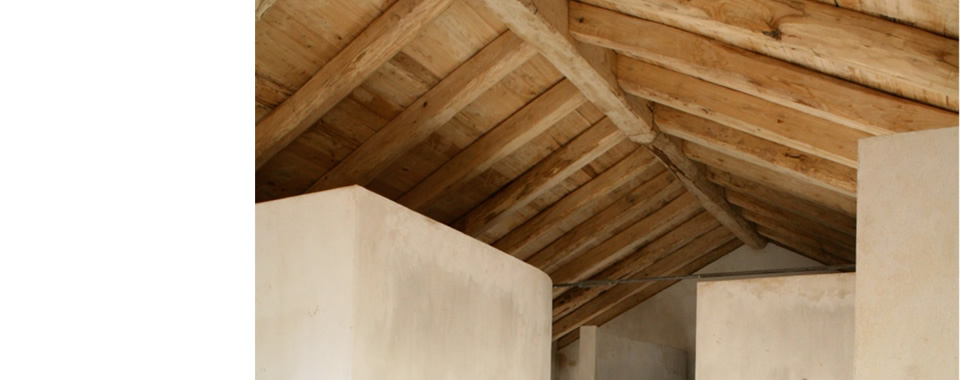

Score - Sustainable Construction in Rural and Fragile Areas for Energy efficiency
Guidelines for Integrated territorial Planning:
Solar thermal collector
The following guidelines come from a deep analysis of case studies, innovative products, norms and regulations, in relation to the local level. This analysis is summarized in a card that can be downloaded in Greek.
Solar powered applications were always of high scientific and investing interest. Water heating applications for buildings through solar thermal collectors have been applied in the construction sector for many years. Solar power is absorbed by the heat transport fluid which in turn heats the water. This water can be used either for sanitary use or for heating purposes. Various technologies have been developed (each with its advantages and disadvantages including different costs) and some experimental devices have emerged but the prevailing technologies are the natural and forced circulation solar thermal collectors.
The implementation of solar thermal collectors reduces the need for using electricity or burning fossil fuels or natural gas. Greece is a leading country in the Eastern Europe area in terms of producing and installing solar thermal collectors as the all-around the year solar irradiation is intense. Unfortunately the state does not promote the further diffusion of the technology as funding initiatives could not be identified. Buying and installing a solar thermal system is quite affordable for home users and large facilities and its amortization period is only of few years or even less for high sunshine areas.
One the disadvantages of the solar collectors is the difficulty of their integration with the architecture due to the fact that the fluid tanks cause the higher visual impact. The diffusion of the solar thermal collector can be advanced by:
1. Designing and installing more eye friendly solar systems. Especially in new buildings such as hotels the systems can be successfully integrated in the architecture causing minimum visual impact
2. Inexpensive investment with minimum service costs big life time high efficiency and small amortization period in high sunshine areas.
Indication for the Bio-construction Action Plan
Pursuant to the guidelines written above, are here synthetically reported the criteria/examples for pilot projects to be financed in MED territory, in relation with the specific treated theme. These criteria/examples, together with the ones resulting from all the themes of eco-construction tool matrix, will make up a Bio-construction Action Plan for each partner’s country.
- Projects focused on demonstrating the areas that fulfill in the best way the adequate circumstances regarding weather conditions in order to install solar thermal collectors.
- Projects for the dissemination of the impact that the installation of solar thermal collectors have on residences, hotels and public buildings.
- Projects aiming at collecting or creating tools, weather data archives and regulations that could provide the constructors with valuable information on weather conditions and normative of the areas that solar thermal collectors could be installed as well as an evaluation control that would calculate energy consumption and saving after the application of the intervention.
Possible criteria for MED bio–housing quality certificate
The “Regulation for Buildings Energy Performance” (KENAK) that constitutes the normative regulations for the implementation of Law 3661/08 according to the Directive 2002/91 EC, solar thermal collectors are only mentioned in the section of passive heating systems. The Technical Chamber of Greece (TEE), implemented a guide entitled “Bioclimatic Design of Building” based on the principal guidelines of “KENAK” in which over 100 scientists were engaged in order to determine the guidelines and the techniques that must be followed as far an energy efficient and bioclimatic buildings are concerned. The technical guide of TEE dedicates a small part to a description of solar thermal collectors in the section of passive heating systems. However, a MED bio-housing certificate could also include data and guidelines on architectural integration of solar panels, since they provoke serious visual “pollution”.
Case studies
Bioclimatic houses in Kefalonia
Bioclimatic hotel in Kefalonia
